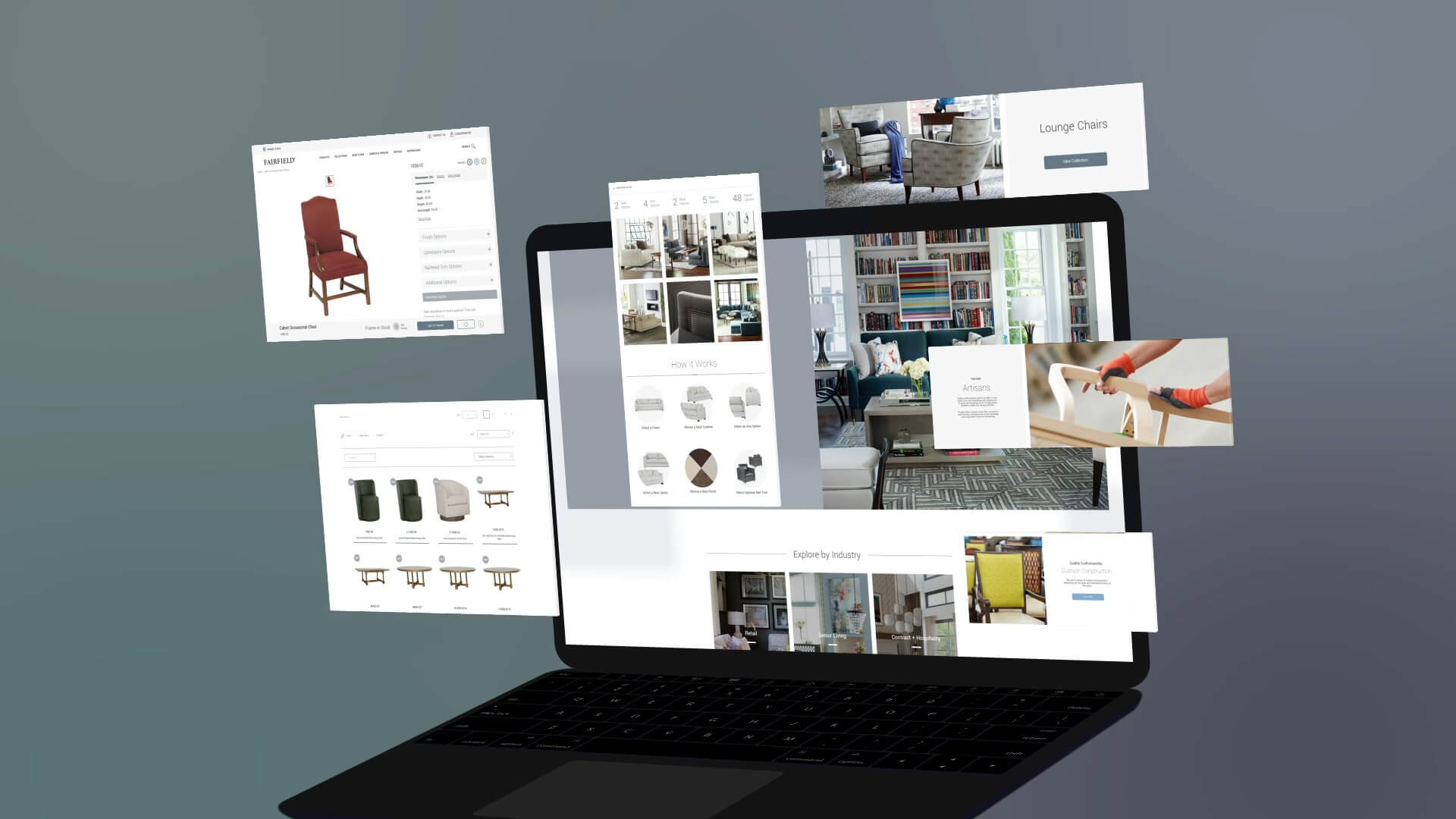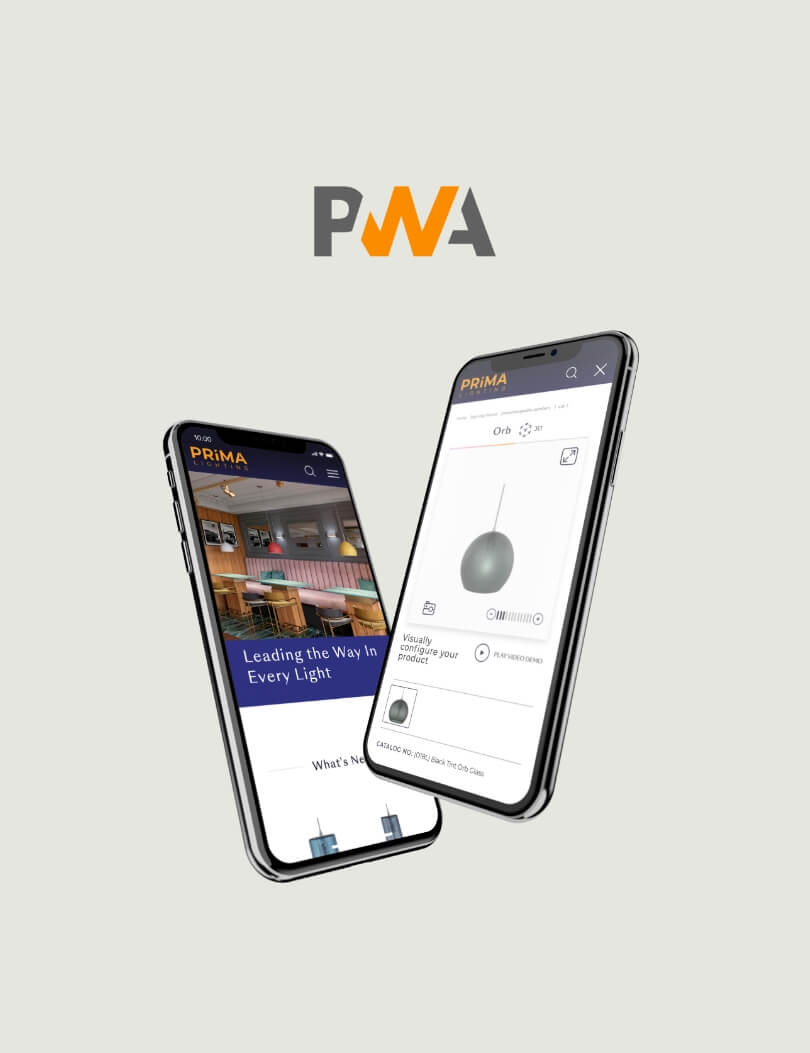Progressive Web App Development Company
Serious B2B eCommerce brands use Progressive Web Applications (PWA) for their digital stores
At Jola, our primary focus is to turbocharge our clients’ eCommerce platforms to attract more viewers, enable a seamless buyer experience, and thus ensure higher conversion rates. We do this by integrating PWA technology with the wide capabilities of Adobe Commerce.
As a Certified Adobe Commerce Partner, Magento Solutions Partner, and Magento 2 Trained Solutions Partner, we’re a progressive web app development company that’s well-versed in harnessing the power of beautiful Adobe storefronts with the intricacies of eCommerce stores.

We’re Certified Adobe Partners
Building headless solutions with Adobe Commerce Cloud & On Premise
Experience building PWA frontends using Adobe’s Venia
Magento Solutions Partner & Magento 2 Trained Solutions Partner
Also equipped to use WooCommerce and WordPress for companies who do not need enterprise solutions
We build the most robust business platforms to engage both your B2B partners and B2C consumers using PWA technology
In the manufacturing industry, digital commerce is large and complex. No one size fits all!
You need a technology solutions partner who can build the platform best suited to your business needs. At Jola, since we’ve spent over a decade working with leading Furnishings manufacturers, our process starts with asking you the right questions so we can custom-design the right solution for your company. And once we’ve zeroed in on those needs, no customization is out of reach!
Our deep-rooted relationship with Adobe means that every PWA we build is technically sound and tailored to businesses’ specific needs, driving traffic and converting visitors into active buyers. Through the judicious use of PWA technology and Magento’s flexibility, we aim to deliver solutions that resonate with the dynamic demands of today’s digital landscape.
Seamlessly Integrated Progressive Web Apps
Large-scale digital commerce success hinges on a well-oiled system of applications talking to each other.
Jola-build PWA are seamlessly integrated with the most robust enterprise solutions, PIMs, DAMs, CRMs, ERPs among others!

Why Choose Progressive Web App Development Services?
Blazing Fast, Remarkably Fluid
In the age of instant gratification, speed is paramount. A PWA storefront brings you that crucial edge.
By harnessing the power of modern web capabilities, our progressive web applications load up to 10 times faster than traditional websites. For your business, this means reduced bounce rates, higher user engagement, and increased conversions. Make every millisecond work for your brand.

Prime Visibility, Peak SEO Performance
The search engines' digital arena is vast, but only a few genuinely shine. Our progressive web apps are engineered for this limelight.
Seamlessly blending high load speed, mobile optimization, and content prioritization, they easily reach the top of search results. With enhanced SE visibility, you will earn quality traffic organically. In an ecosystem where attention spans are fleeting, Jola-developed PWA e-commerce solutions ensure you’re not just noticed but that your content is properly consumed.

More Than Mobile-First; It's Mobile Perfected
Mobile traffic rules the digital domain. PWA sites transcend the typical mobile-first approach.
They encapsulate a mobile app-like experience within the web’s accessibility. With fluid animations, intuitive navigation, and adaptive layouts, users are treated to a native app feel without the hassle of downloads or updates. The results? Enhanced user satisfaction, increased session durations, and heightened brand loyalty. Dive into the future of the mobile web with our specially developed progressive web app development services.

Consistency Beyond Connection
Connectivity issues are a relic of the past with our Progressive Web Applications (PWA).
They are crafted to function offline, offering users uninterrupted access to your content anytime, anywhere. Whether in a subway or a remote area, your brand remains within their reach. This continuous presence not only bolsters user trust but also reinforces brand loyalty. In a world that values 24/7 access, ensure your business never fades into the background. As a progressive web app development company, we’ll help guide your customer’s digital journey.

One of the Top Progressive Web App Development Companies

Rising User Preference
Recent surveys indicate that brands using PWAs notice that page views increase by nearly 134% over traditional mobile apps. Their inclination stems from the app-like feel PWAs provide on browsers. Features like offline access and push notifications further bolster this shift.

Impact on Engagement
According to industry studies, PWAs register a whopping 50% increase in user engagement. Thanks to faster load times and immersive full-screen experiences, users visit PWA sites more frequently and delve deeper into their content.

Benefits for eCommerce
Some eCommerce sites who’ve hired progressive web app developers to build their systems have seen 20% higher revenue than on their native apps. Enhanced navigation and streamlined checkouts play a part, while the “Add to Home Screen” feature boosts repeat visits and sales.

Reduction in Development Costs
Businesses leveraging PWAs can save up to 33% on maintenance costs. By sidestepping separate developments for websites and multiple OS apps, companies can achieve 3 to 4 times financial and temporal efficiency.

Offline Capabilities and User Experience
PWAs, with their offline functionality, reduce page disruptions and increase load speeds up to 10 times. Users appreciate uninterrupted access to content even during connectivity hiccups, enhancing their overall experience and SEO.

Boost in Conversion Rates
Working with progressive web app development companies led businesses to observe conversion rate boosts of up to 36%. This uplift is credited to the harmonious blend of speed, offline access, timely push notifications, and the intuitive app-like interface.
Progressive Web Application Development Company
General PWA Stats
Progressive Web Apps (PWAs) are revolutionizing user experiences on digital platforms.
Lower Bounce Rates
With their fast loading and offline capabilities, Progressive Web Applications provide a bounce rate reduction of up to 40%.
More Conversions
The app-like interface and efficient navigation of PWAs can lead to an average conversion rate increase of 36%.

Testimonials
At Jola Interactive, we take pride in the fact that many of the world’s most respected brands trust our platform to provide their customers with immersive and engaging 3D and Web B2B content. Our commitment to delivering exceptional quality and service has helped us build a strong reputation in the industry and establish long-lasting relationships with our valued clients. We believe that our innovative approach and attention to detail set us apart and enable us to consistently exceed our client’s expectations.
Magento Development for Furniture Company
Their technical capabilities and understanding of our complex product offerings and unique processes are impressive.
Lacey Griffith
VP Information Technology, Sherrill Furniture
Web Design & Dev for Furniture Manufacturing Company
They’re experts in their field, and the team communicates on a human level with us.
Melissa Wolck
Graphic Design & Social Media Manager, Verellen
Web Dev & Design for Home Furnishings Wholesaler
“The way they collaborate and partner with us is outstanding.”
Robert Pearson
Chief Digital Officer, Moe's Home Collection
Web Design, Dev & UI/UX Design for Manufacturing Company
The technical team at Jola was always able to figure out a solution for a request from a technical point of view.
Anonymous
Marketing Manager, Manufacturing Company
Photography for Manufacturing Company
I am pleased with the outcomes.
Anonymous
Executive, Manufacturing Company
Web Design & Dev for Decorative Home Accessories Company
The team that I worked with during the discovery, design, testing, and implementation phase was professional.
Daniel Lehman
Director of IT, Global Views
Ready to Get Started Today?
Why waste another day thinking and not designing? Jola is ready to help you get the ball rolling on your project as soon as you hit send! Fill out the form below and we will get in touch with you for your free consultation.
Progressive Web Application Development Company
FAQ
Still have questions? Check out our FAQ section, where we provide answers to common queries regarding Progressive Web Applications (PWA), Jola’s services, and more. We are committed to ensuring that you have all the information you need to make informed decisions about your B2B journey.
-
What is a Progressive Web App (PWA)?
A PWA web application utilizes modern web technologies and best practices to provide a reliable, fast, and engaging user experience. It combines the best of web and mobile apps.
-
How do PWAs differ from traditional websites or mobile apps?
Unlike traditional websites, Progressive Web Applications (PWAs) can work offline, send push notifications, and be added to a device's home screen. They offer a mobile app-like experience without needing app store approvals or separate platform codebases.
-
Why should an e-commerce business consider a PWA?
Progressive Web Applications provide a seamless, fast, and reliable shopping experience, leading to increased user engagement, higher conversion rates, and reduced development costs since one codebase serves all platforms.
-
Can PWAs integrate with existing e-commerce platforms?
Many e-commerce platforms now support or are moving towards PWA integrations, allowing businesses to upgrade their online stores without a complete overhaul.
-
How do PWAs enhance the shopping experience?
A progressive web application development company can build you a site that offers offline browsing, instant loading, push notifications for promotions or updates, and a full-screen experience, making shopping more convenient and engaging.
-
Are PWAs secure for e-commerce transactions?
Absolutely. Progressive Web Applications use HTTPS to ensure that all transactions and user data are secure. They also adhere to the web's secure, user-centric permission model.
-
Will a PWA improve my website's performance?
Yes, PWAs prioritize performance, ensuring fast load times and smooth interactions, which is crucial for keeping potential customers engaged.
-
How do PWAs affect search engine rankings?
Speed, user experience, and mobile-friendliness are ranking factors for search engines. Since PWAs enhance all these aspects, they can positively impact search engine rankings.
-
Do PWAs require frequent updates like mobile apps?
No, PWAs update "on-use." This means users who access a PWA always get the latest version, eliminating the need for manual updates through app stores.
-
How cost-effective is developing a PWA for my e-commerce business?
Developing a PWA can be more cost-effective than creating separate native apps for different platforms. You save on development and maintenance costs with a single codebase while reaching a broader audience.
